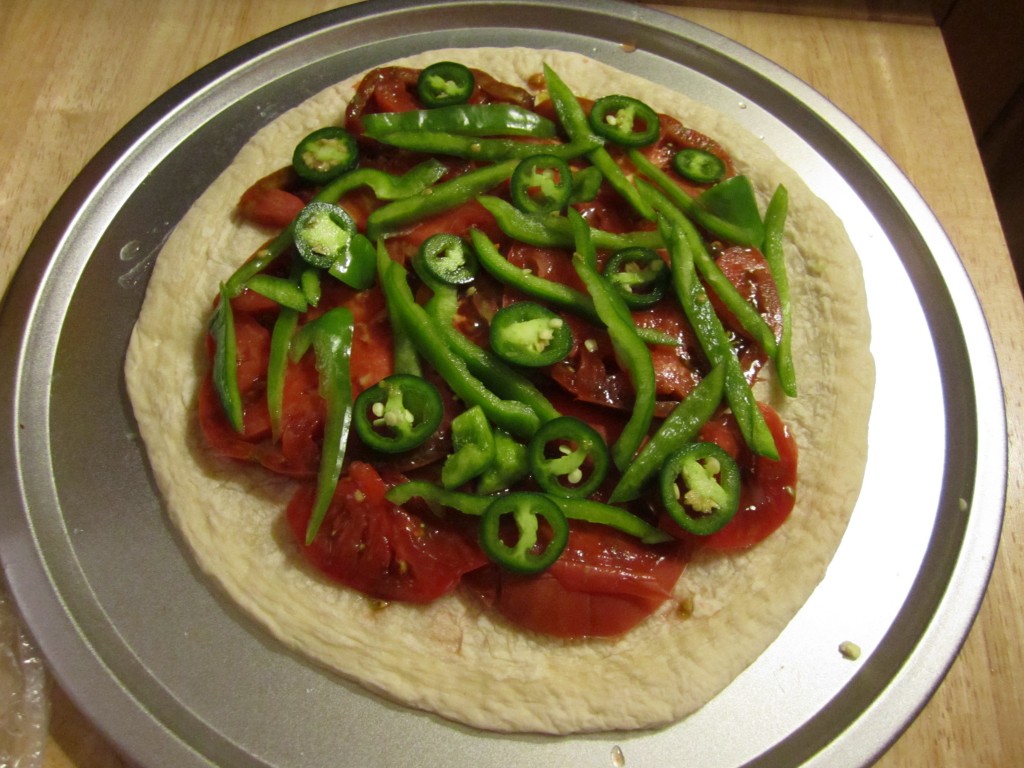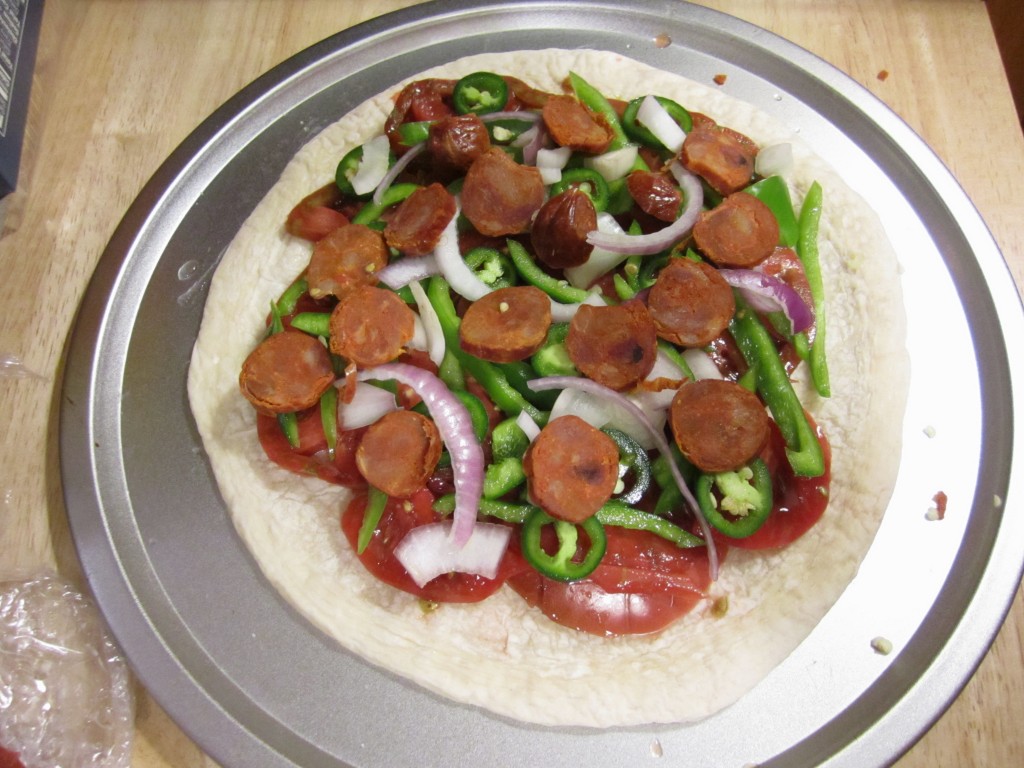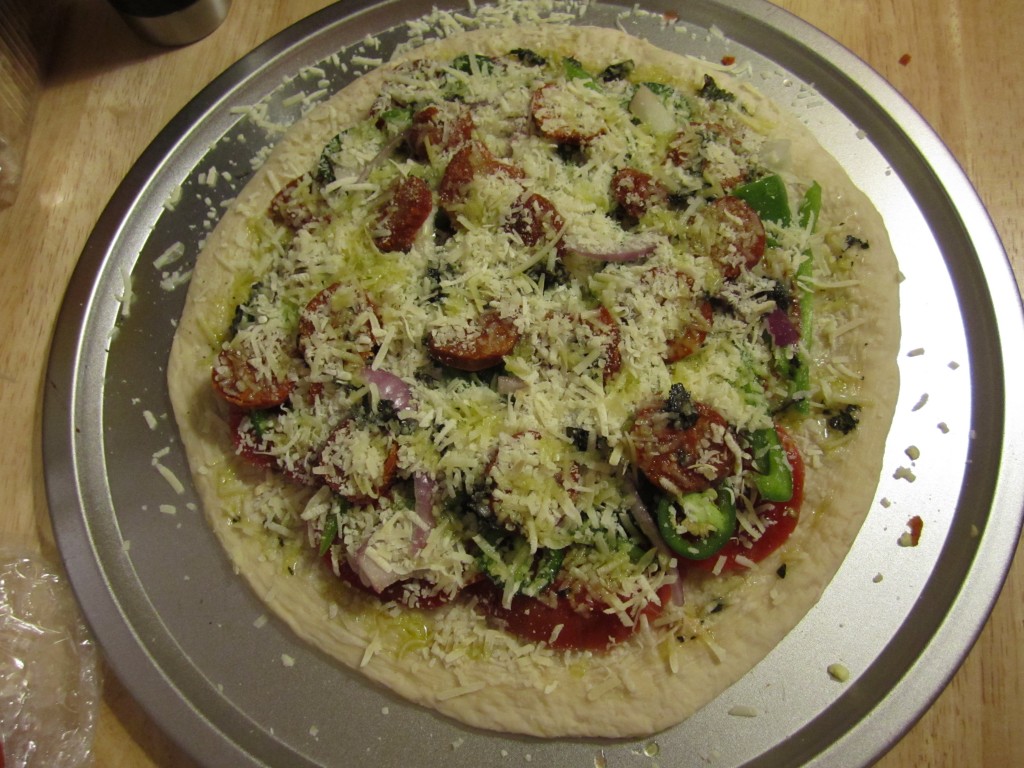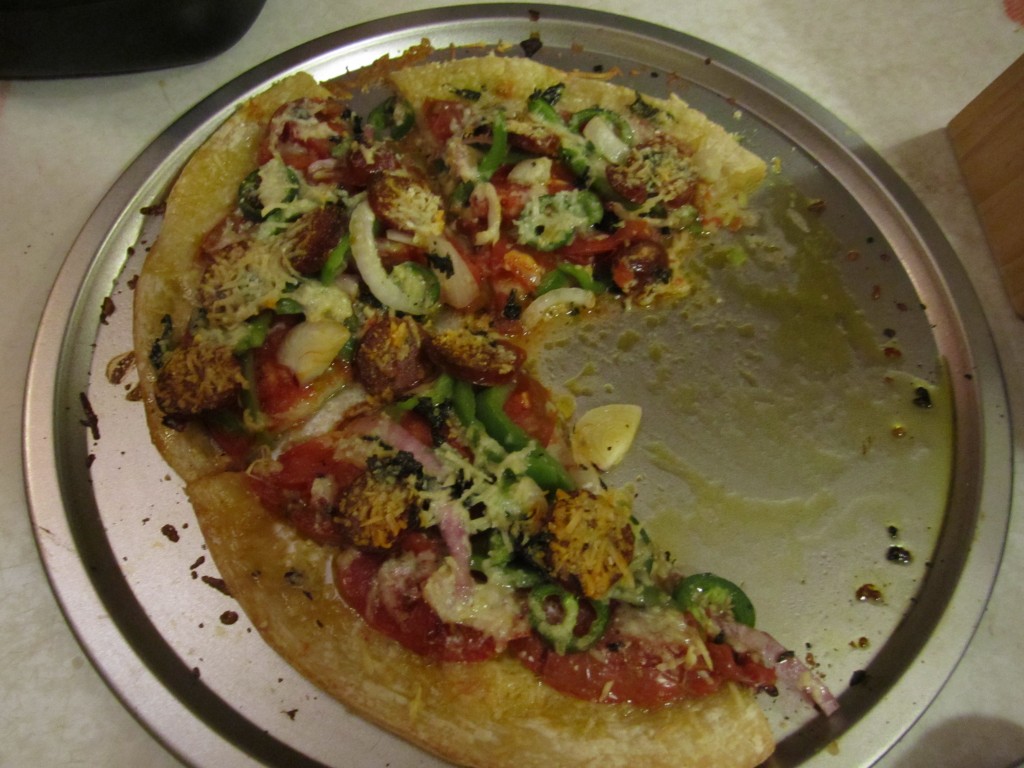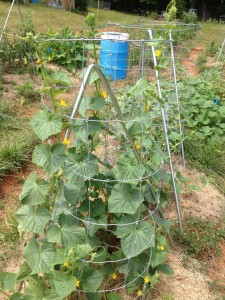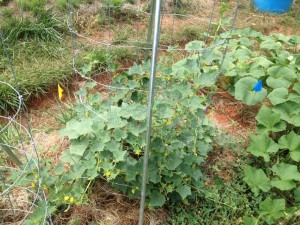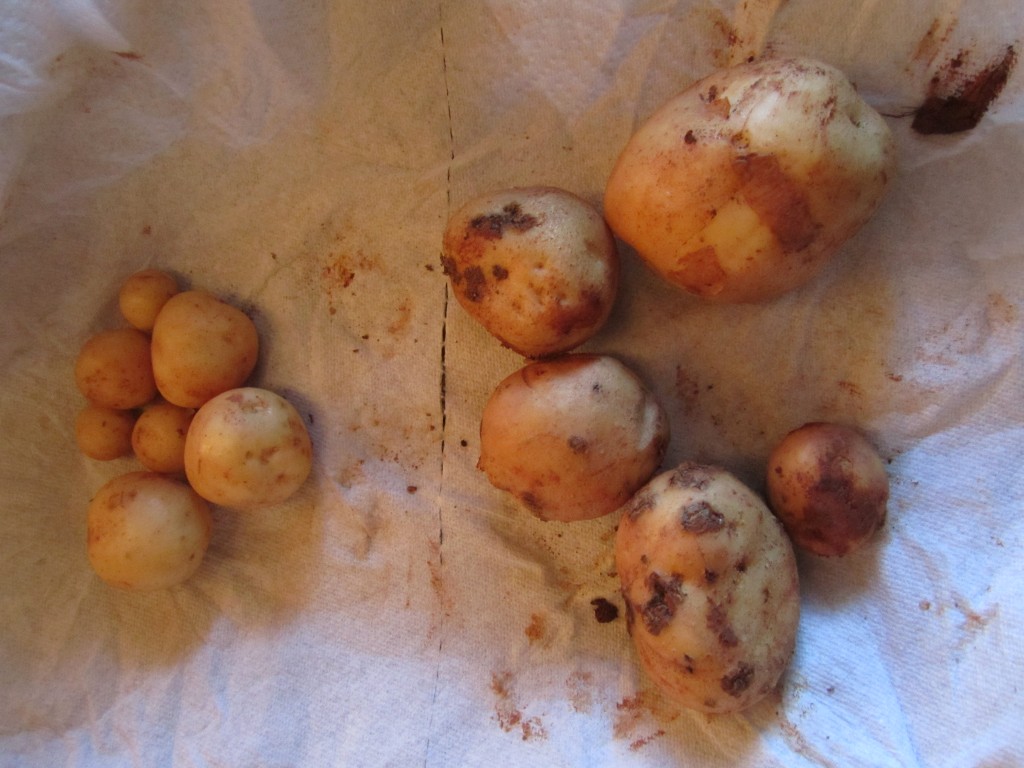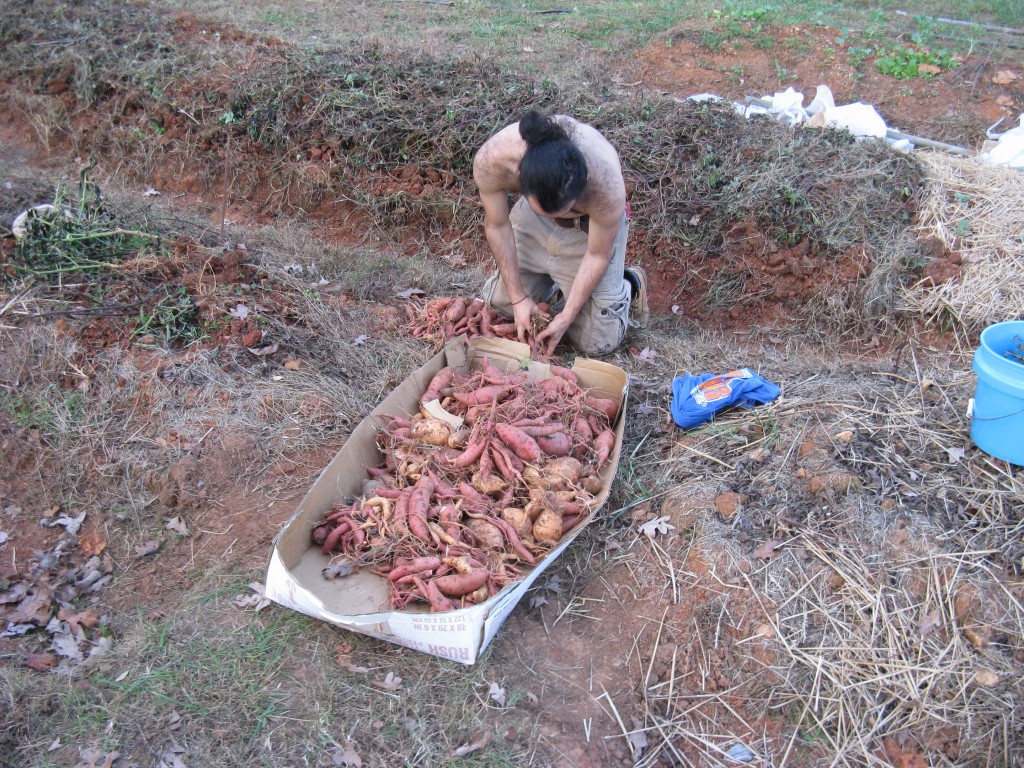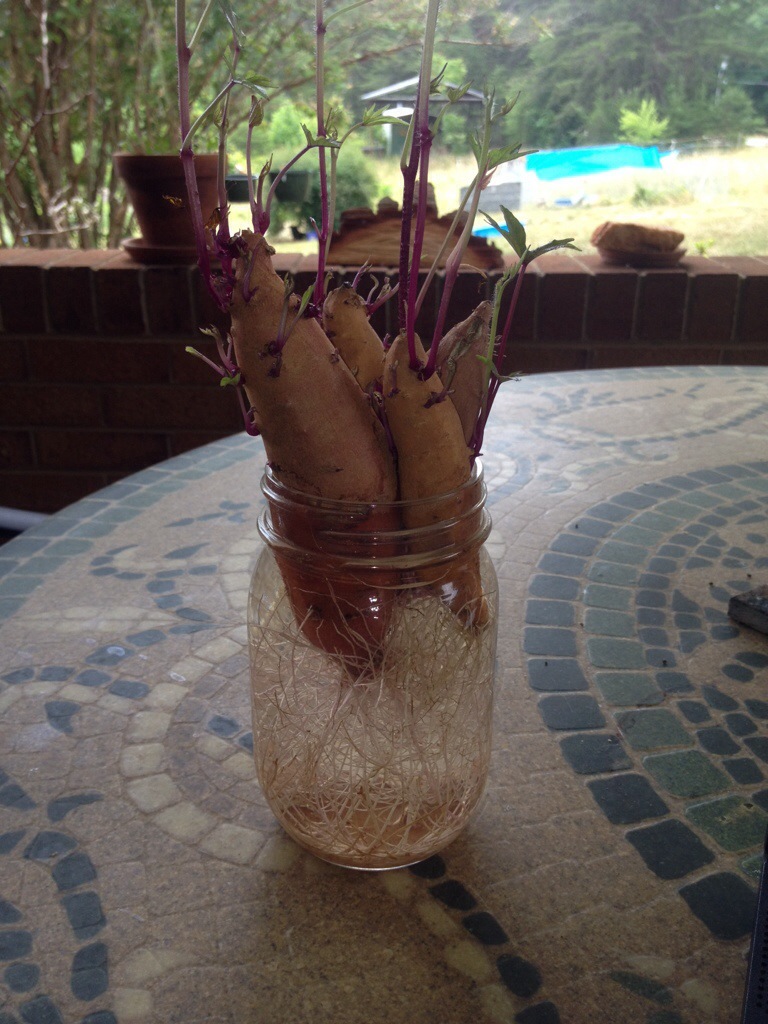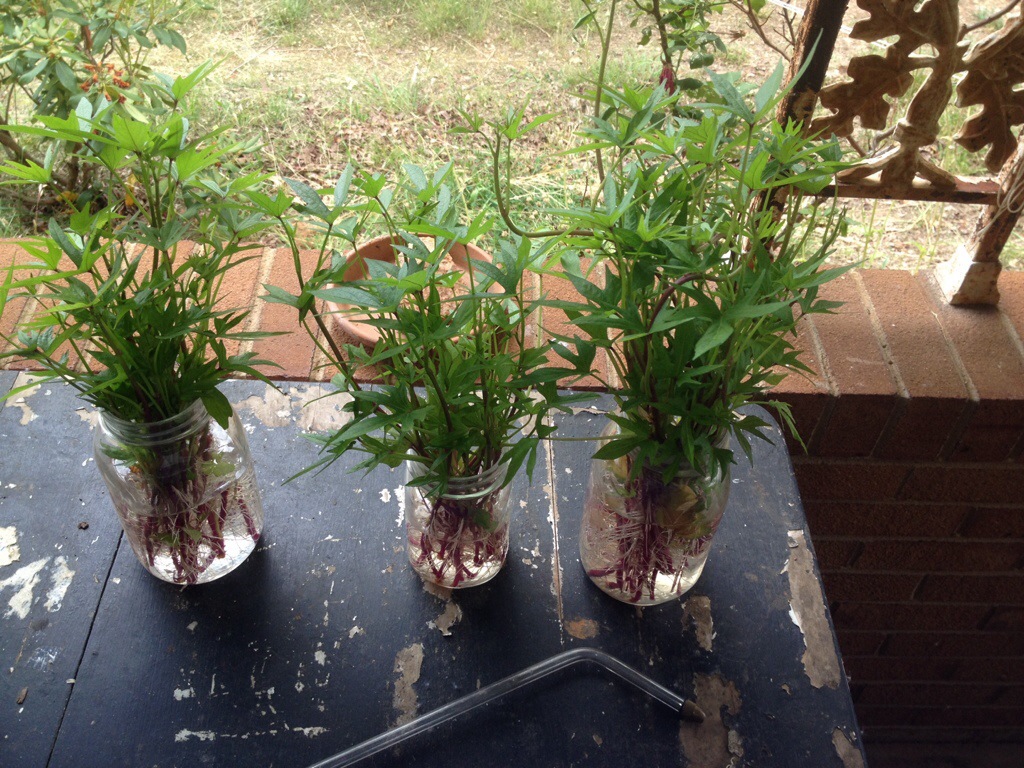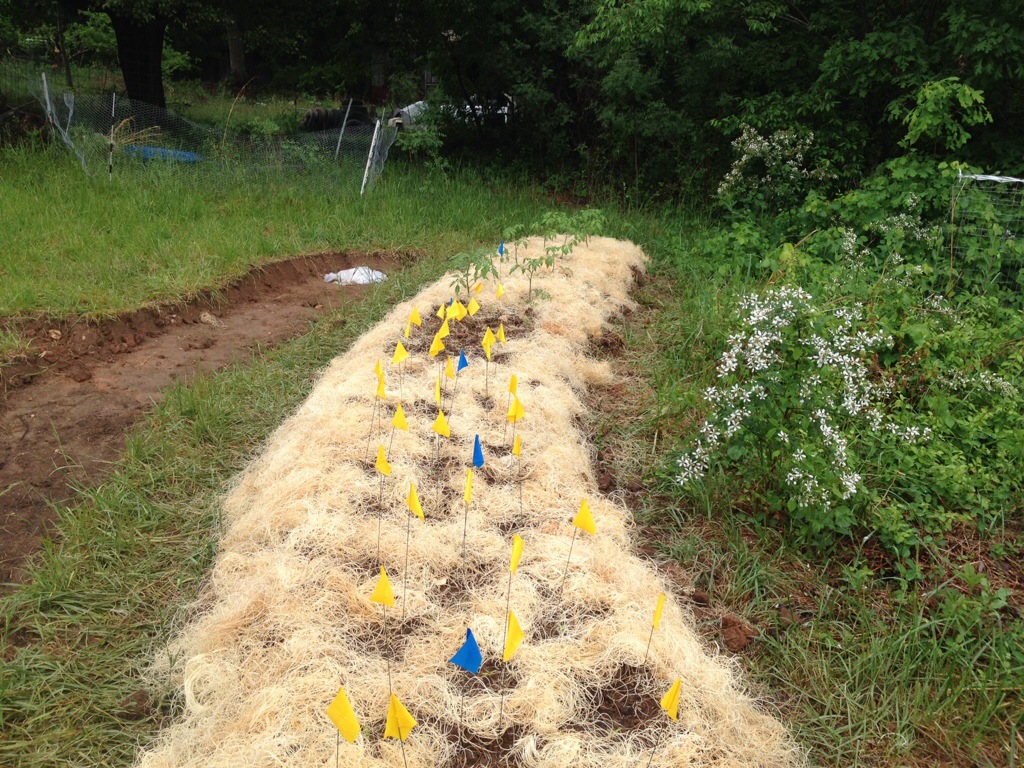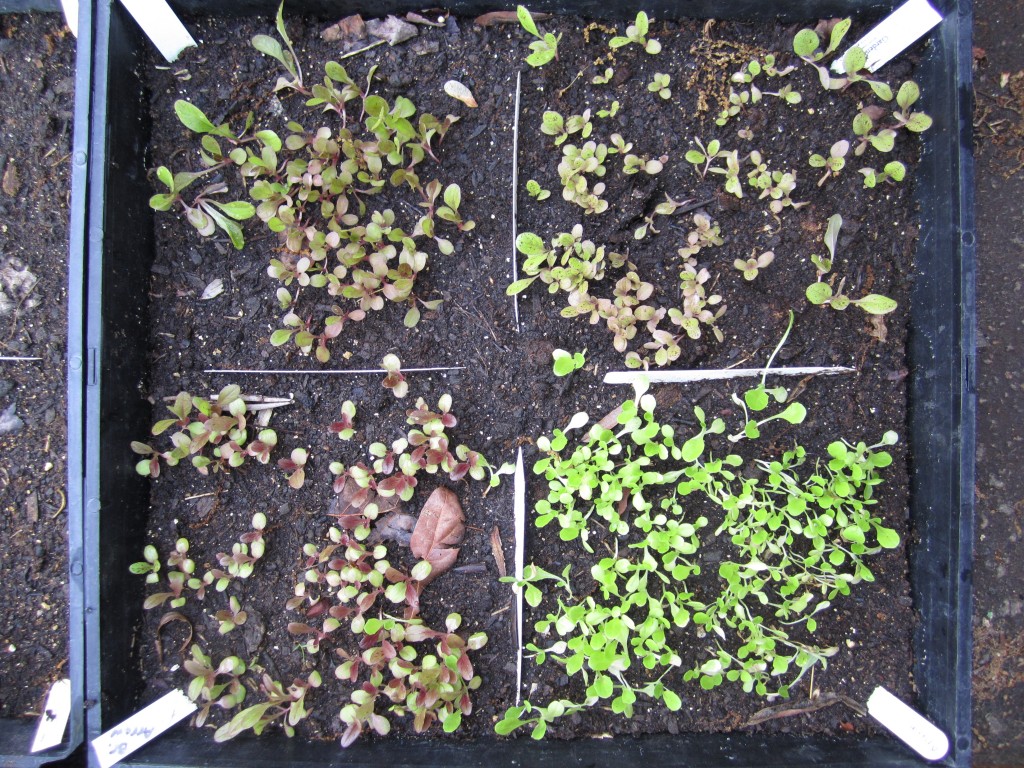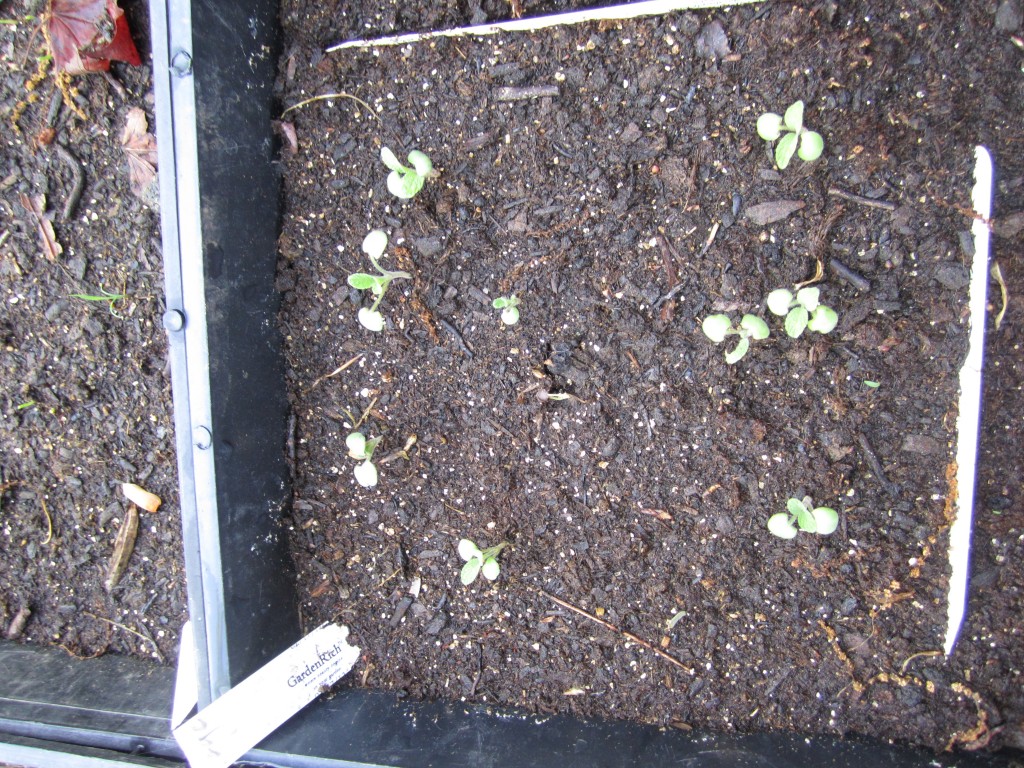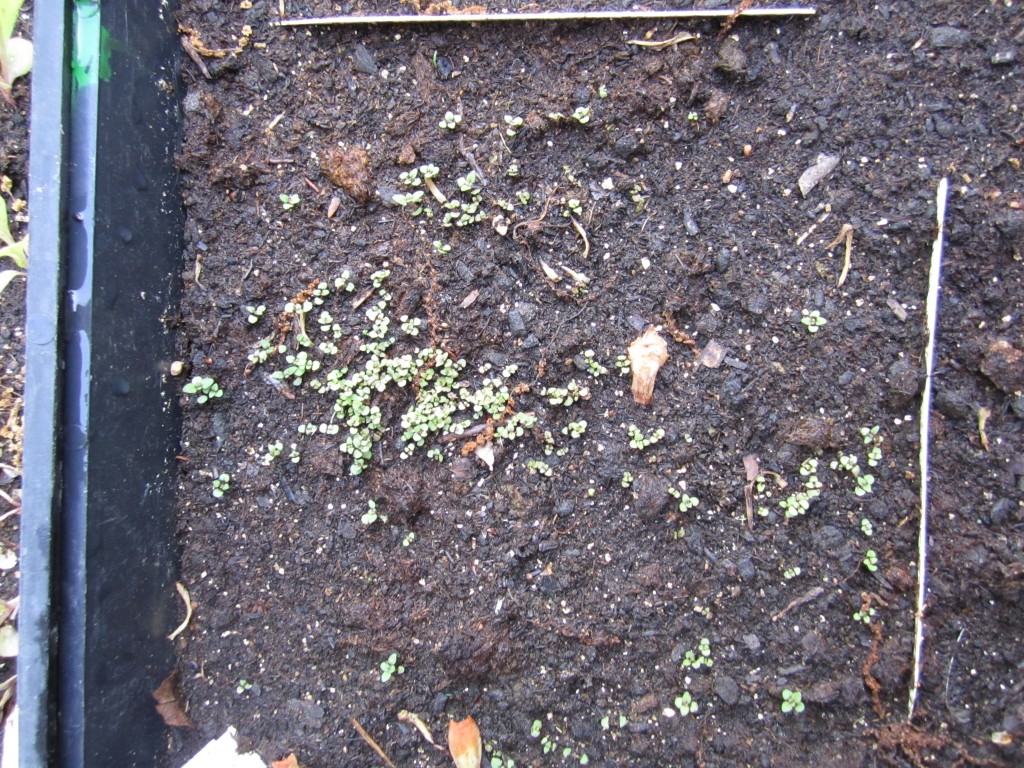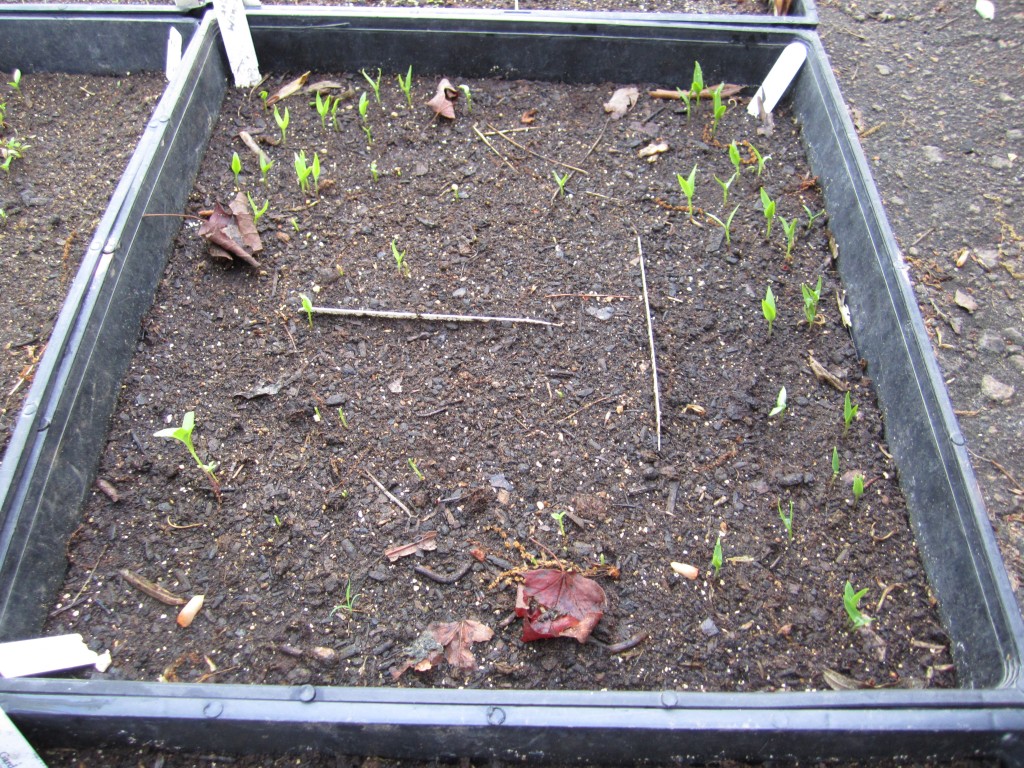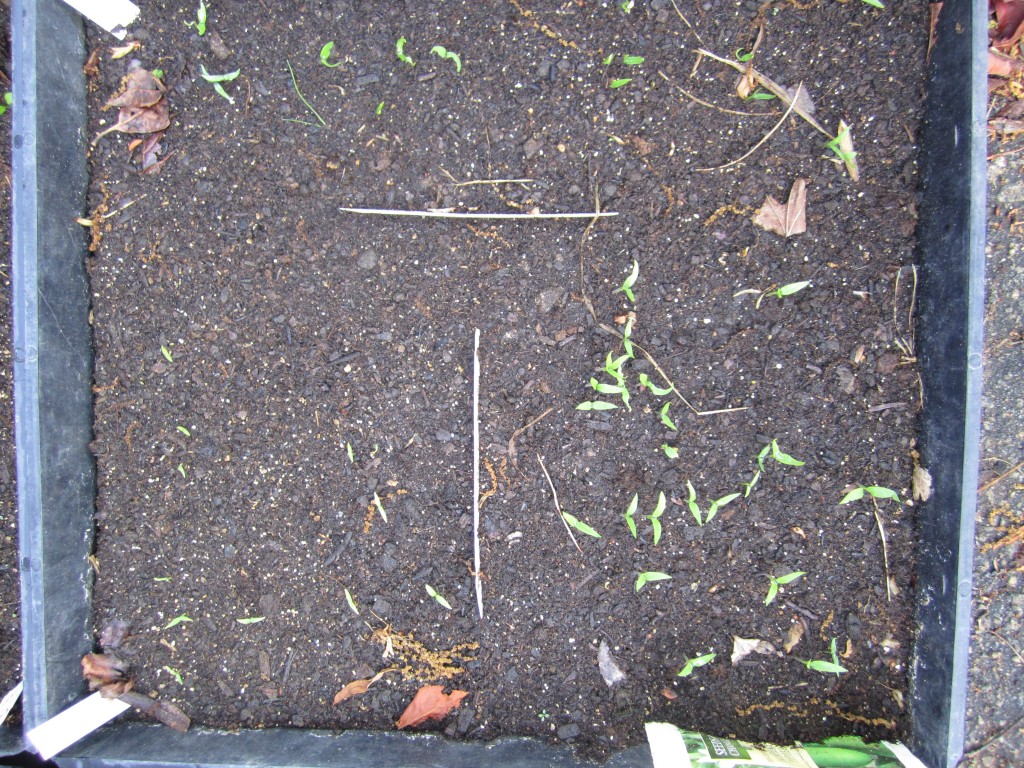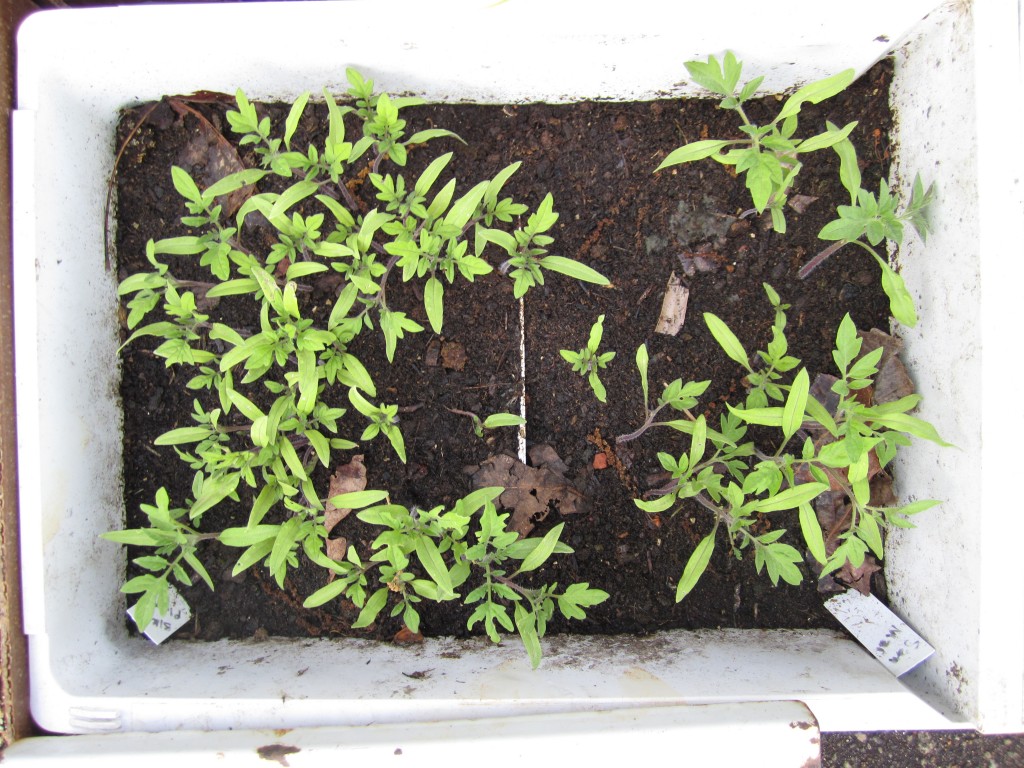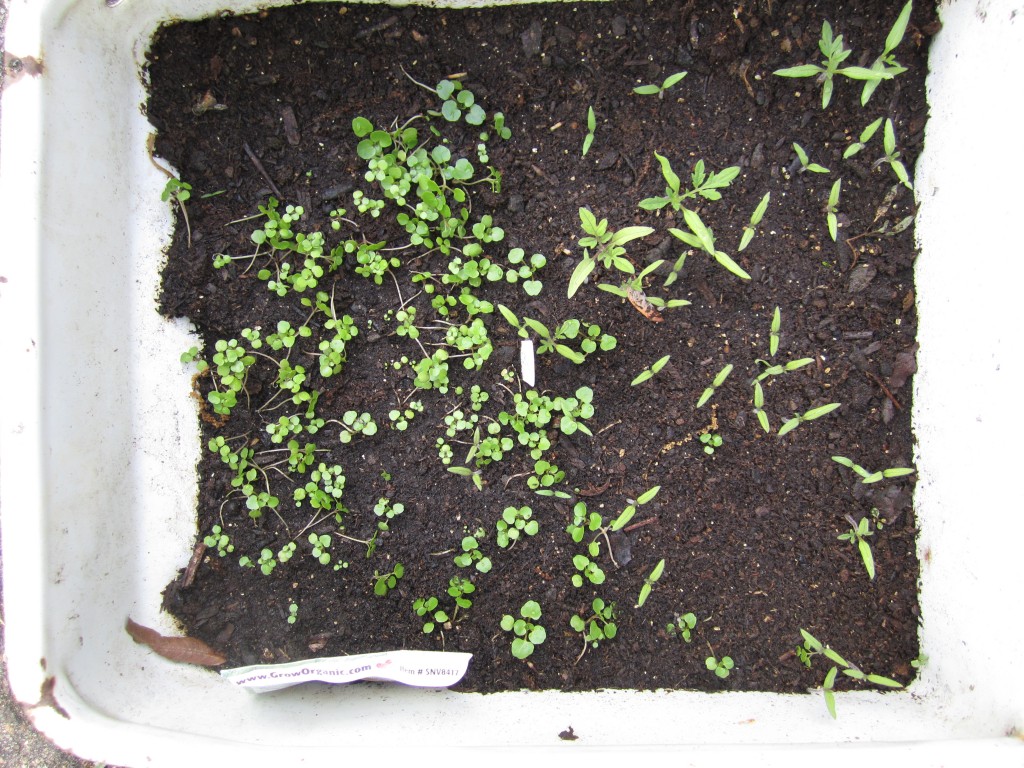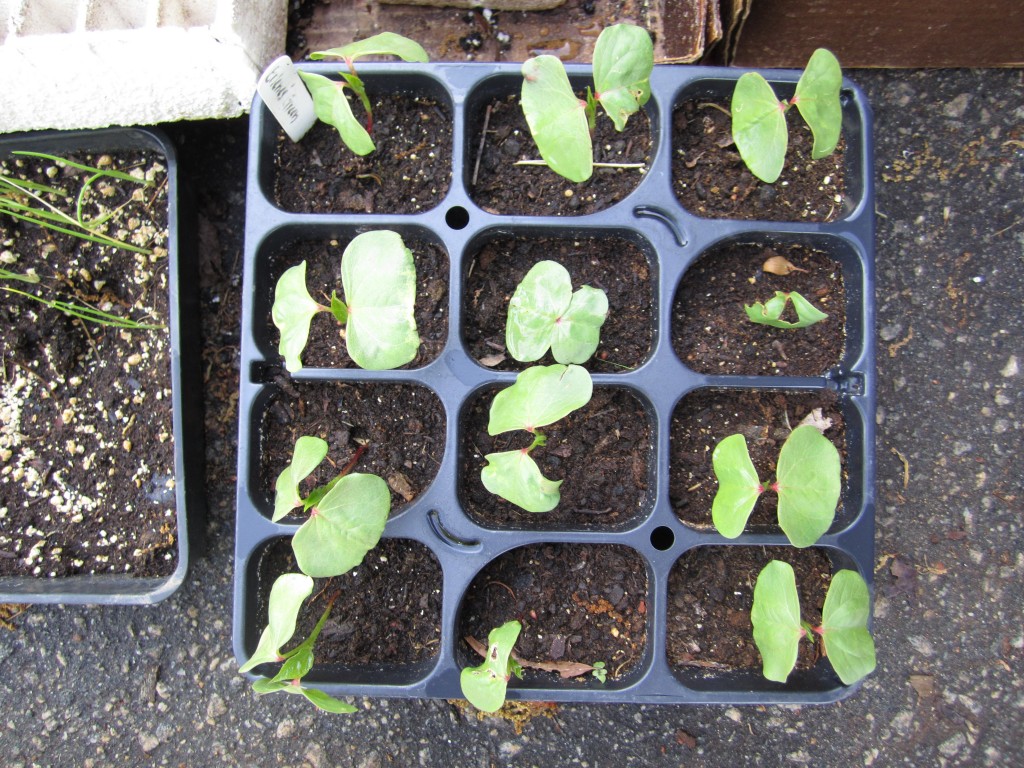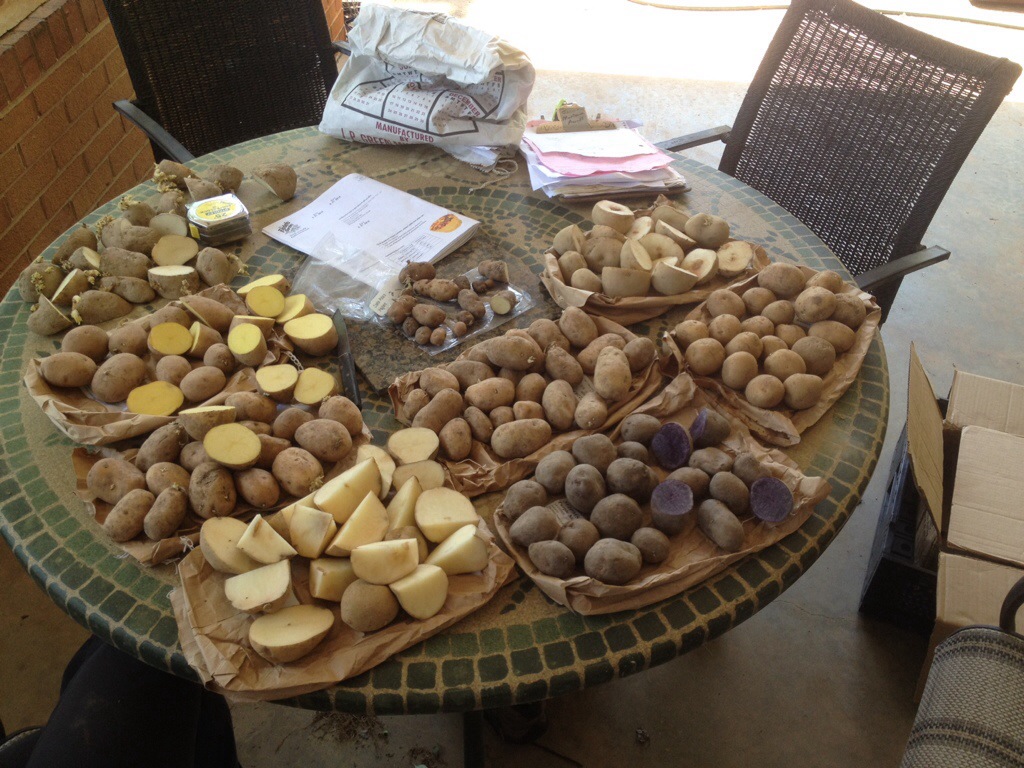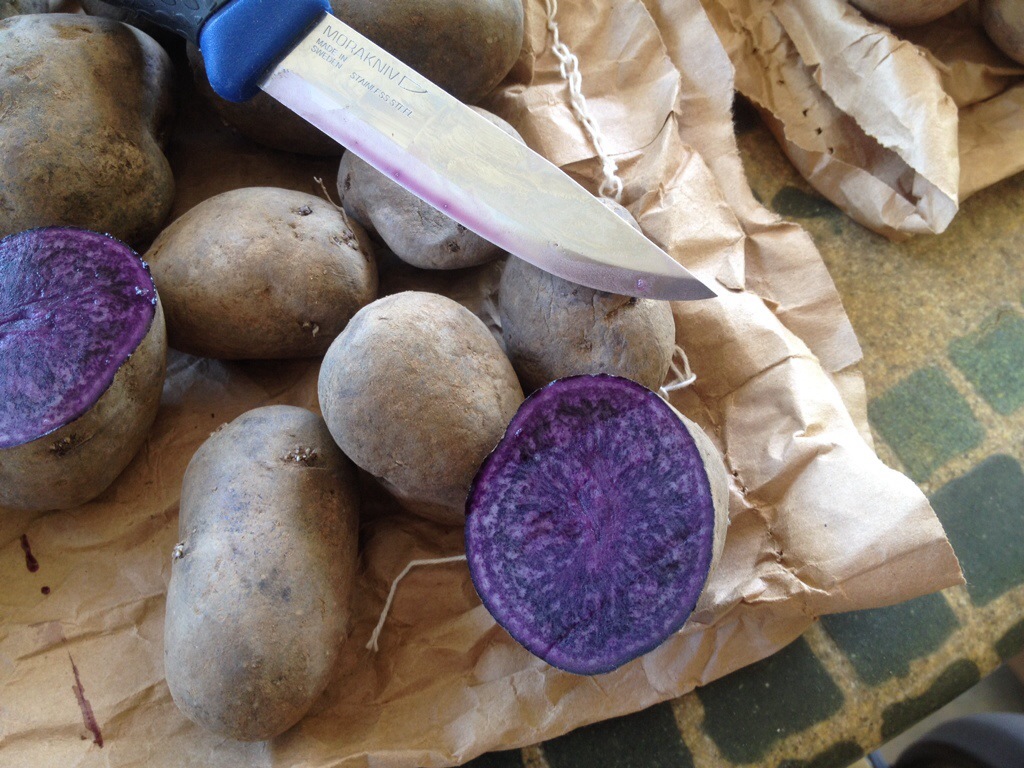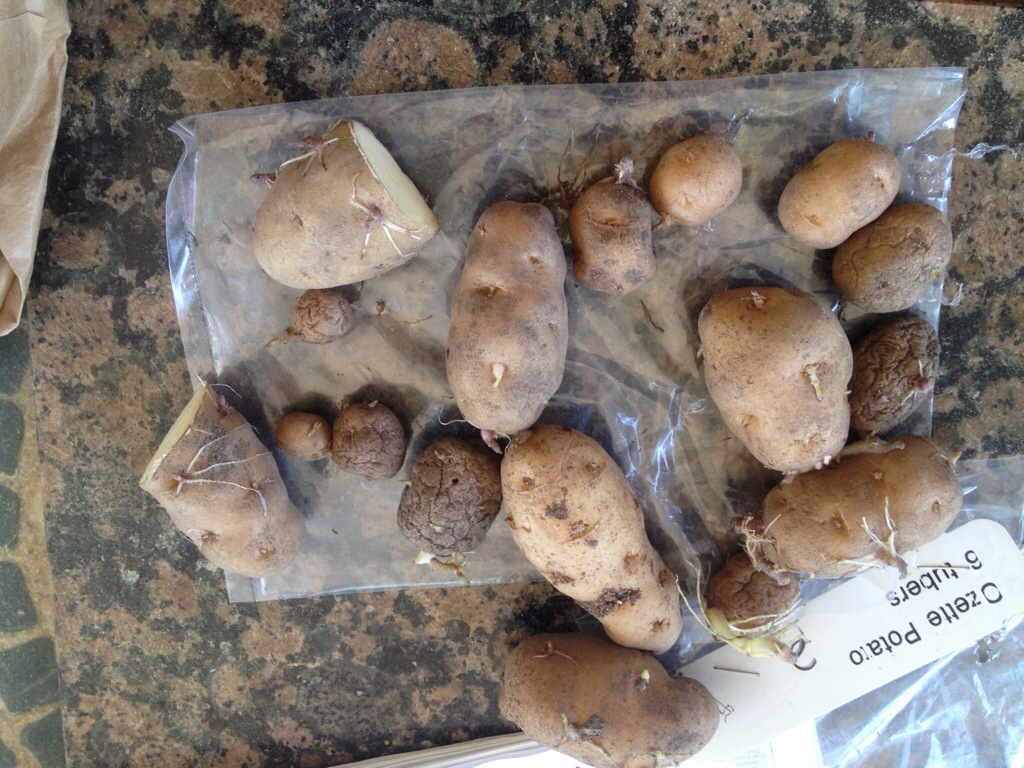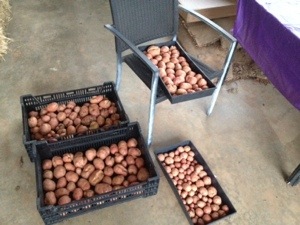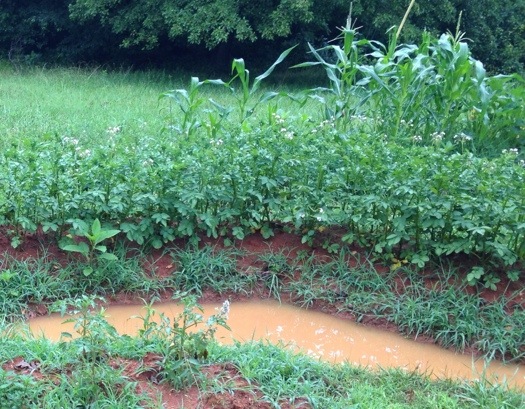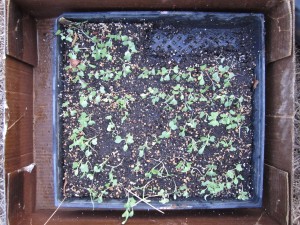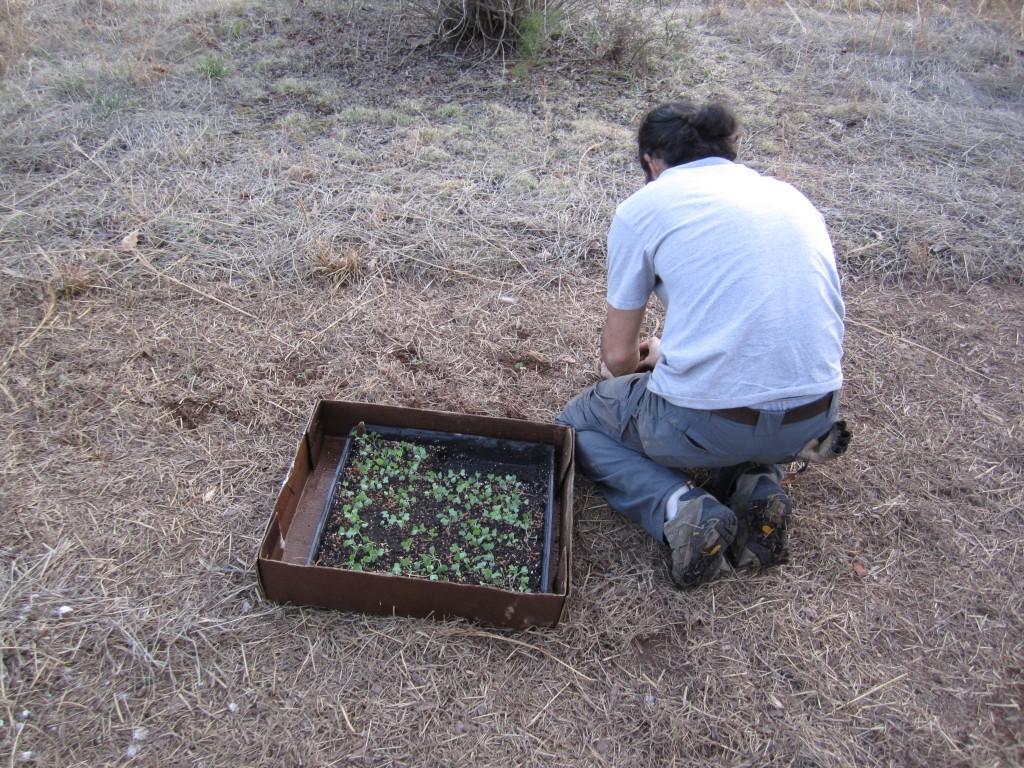In my post about some of the differences between living in the country vs the city (which include thinking that anywhere other than rural Stokes county = the city), I mentioned that it took us a whole year before we found a pizza place that would deliver to our house. While delivery pizza is great for nights you just don’t feel like cooking, nothing beats a homemade pie crisp and fresh from the oven.While we haven’t yet made our own pizza dough, we do use either frozen pizza doughs from the store, or more often, tortillas.
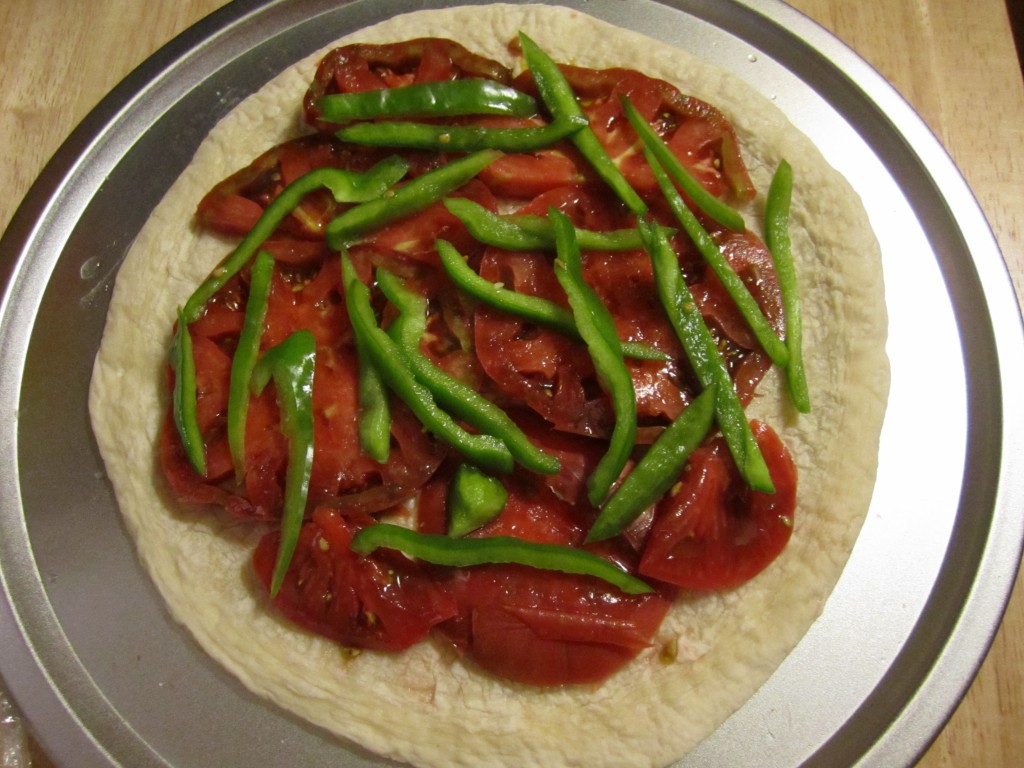
a fresh tortilla, with sliced cherokee purple tomatoes and california wonder peppers is a great base for garden pizza
But the best part about homemade pizza is that you get complete control over your toppings. No having to split, or compromise with friends or significant others about meat lovers vs. veggie supreme. This especially holds true with tortilla, “personal pan” pizzas, where each person gets their own pizza to create and eat.
Some of our favorite toppings are the ones we pick fresh from the garden. Tomatoes, basil, bell peppers, mushrooms, onions, and jalepenos all make great pizza toppings. Add some sausage, or chorizo, and some garlic olive oil, and your in for a fun night.
We use thick slices of homegrown cherokee purple tomatoes instead of tomato sauce, and a light sprinkling of Parmesan cheese. A little salt, and a drizzle of oil really brings it all together, and makes it all but impossible for any leftovers to survive.
Garden pizza! A delicious way to save some some money and get a full helping of nutrient dense veggies form the garden! No, the chickens won’t be eating any of this pizza!
